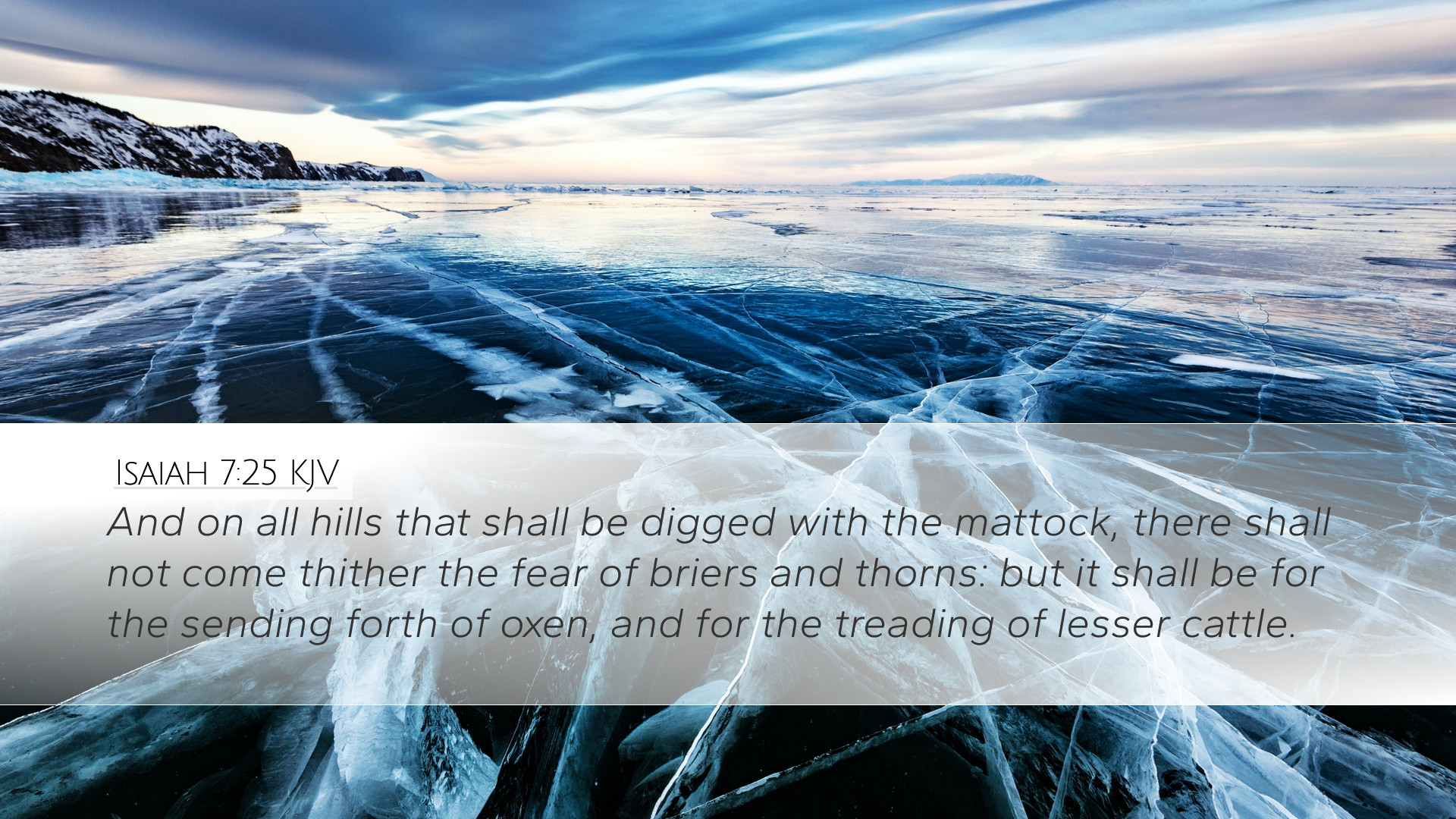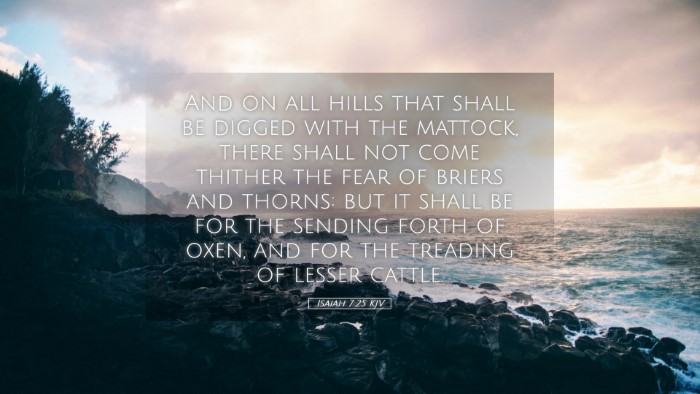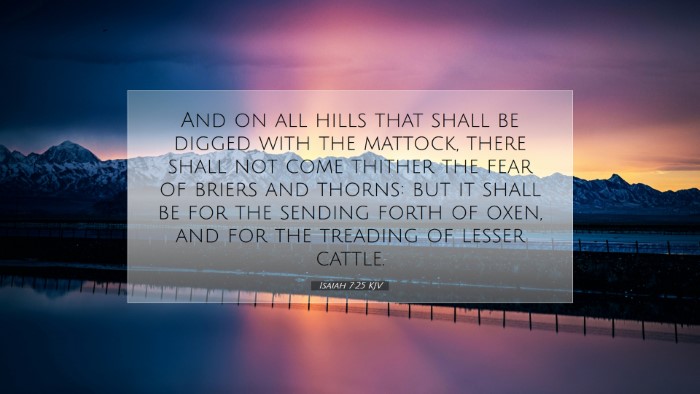Commentary on Isaiah 7:25
Isaiah 7:25 states: "And on all hills that shall be digged up, there shall not come thither the fear of briers and thorns: but it shall be for the sending forth of oxen and for the treading of lesser cattle."
This verse is deeply instructive, revealing the desolation that follows the Assyrian invasion, as well as the profound hope intertwined with judgment. The land, once fertile and flourishing, becomes a witness to utter devastation, leading to a significant turn in the people’s way of life.
Contextual Overview
In this chapter, the prophet Isaiah is addressing King Ahaz of Judah during a time of great turmoil, as he faces threats from Israel and Syria. The Lord sends Isaiah to reassure Ahaz that these threats would not stand. However, the verses following this consultation reveal the consequences of turning away from God and relying on foreign alliances.
Commentary Insights
Isaiah's Prophetic Imagery
As we delve deeper into the imagery presented in Isaiah 7:25, we notice several layers of meaning concerning God’s promise and the consequences of sin. The "hills that shall be digged up" can symbolically indicate areas of spiritual and moral decay. The act of digging up hills, rather than tending to vineyards, underscores a time when agricultural prosperity is forsaken.
The Absence of Fear
Matthew Henry interprets this lack of fear regarding briers and thorns as indicative of a certain irrelevance; where once there was thriving agriculture, now the land is left to wild growth without cultivation. The symbolism of such growth also manifests the chaotic aftermath of Israel's enemies overpowering them—a reflection of fear and judgment displaced.
Hope and Restoration
Albert Barnes brings to light that while the verse illustrates despair, it also harbors hope for agricultural recovery and future prosperity, which could signify the eventual restoration of the land after judgment. The mention of oxen and cattle emphasizes a return to normalcy, suggesting that the devastation will not last forever.
Spiritual and Theological Implications
Adam Clarke emphasizes that this passage should remind believers of the ultimate sovereignty of God over all nations. The Lord’s ability to change seasons—from one of judgment to one of mercy—demonstrates His control over the affairs of humanity. As such, it is imperative for the people of God to remain steadfast in their faith and trust in divine providence.
The Thematic Connection to Redemption
The theme of redemption woven throughout Isaiah serves as an anchor amidst despair. In the analysis of this verse, one can argue that God’s faithfulness prevails even in judgment, as seen in His promise to restore His people. The discussion of oxen and cattle serves to highlight the natural order restored, reminiscent of the peace and abundance associated with God's kingdom.
Application for Today's Believers
For pastors, theologians, and students of scripture, Isaiah 7:25 is a profound reminder of the necessity of spiritual vigilance. As much as it reflects the reality of judgment, it is equally a call to repentance and hope. The church today must fervently warn against complacency and reliance on worldly solutions when faced with spiritual challenges.
- Encouragement in Despair: When circumstances appear dire, the faithful should remember that God’s providence prevails.
- Call to Repentance: The essential message is one of returning to God rather than seeking worldly alliances for security.
- Hope for Restoration: The promise of eventual restoration reminds believers that their future is secure in God’s hands.
Conclusion
Isaiah 7:25 possesses a richness that transcends time, providing insight not only into the historical plight of Judah but also serving as a timeless message for God’s people today. Its layered meanings around judgment, hope, and restoration invite deep reflection and earnest consideration within the church community. As we consider these profound truths, may we as believers strive to cultivate our spiritual landscapes, ensuring tenderness towards God’s warnings and promises.


